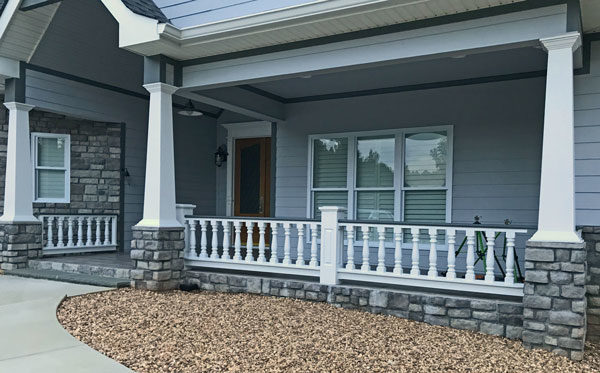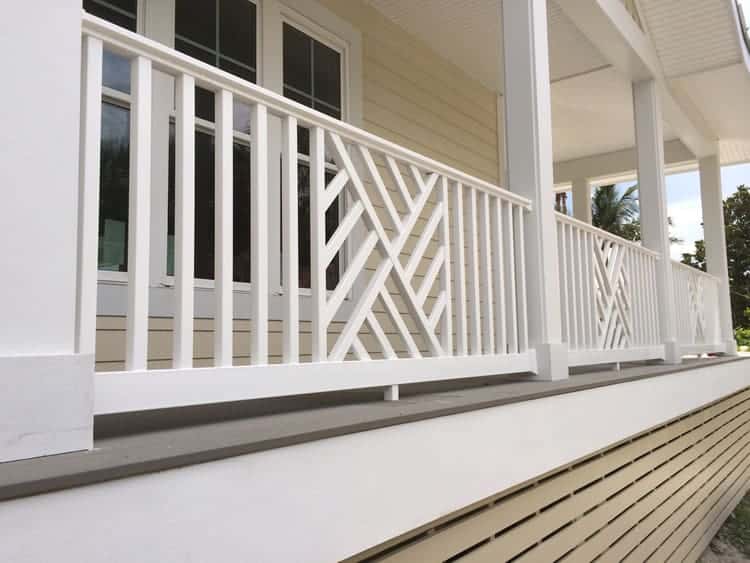Understanding Decorative Porch Rails
Decorative porch rails are more than just safety features; they play a significant role in enhancing the aesthetics of your home. With my own experience in home improvement, I can attest to the transformative power of a well-chosen porch rail. They can complement your architecture, improve curb appeal, and even increase your home’s value.
Types of Decorative Porch Rails
Let’s explore the various types of decorative porch rails available, each with its unique charm and functionality.
Wooden Porch Rails
Wooden rails are traditional and offer a classic look. They can be painted or stained to match your home’s aesthetic.
Metal Porch Rails
Metal rails, such as wrought iron or aluminum, provide durability and a sleek appearance. They come in various intricate designs.
Vinyl Porch Rails
Vinyl is low-maintenance and available in many colors and styles. It’s an excellent choice for homeowners looking for durability without the hassle.
Comparing Popular Materials for Porch Rails
| Material | Durability | Maintenance | Cost | Aesthetic Appeal |
|---|---|---|---|---|
| Wood | Medium | High | Medium | Classic |
| Metal | High | Medium | High | Modern |
| Vinyl | Medium | Low | Medium | Versatile |
Choosing the Right Decorative Porch Rails
When selecting the perfect porch rails for your home, consider the following factors:
Style and Design
Match the style of your home. For example, a Victorian home may benefit from ornate wooden rails, while a contemporary house might look better with sleek metal options.
Safety Features
Don’t compromise on safety. Ensure that whatever style you choose meets local regulations and provides adequate support.
Budget Considerations
Set a budget early on. Remember that while some materials may have a higher upfront cost, they could save money in the long run due to lower maintenance needs.

Installation Guide for Decorative Porch Rails
Installing decorative porch rails can be a rewarding DIY project. Here’s a step-by-step guide to help you through the process.
Tools and Materials Needed
- Measuring tape
- Level
- Drill
- Screws and brackets
- Post anchors (if needed)

Step-by-Step Installation Process
- Measure the space where you want to install the rails.
- Cut the rails and posts to the appropriate lengths.
- Secure the posts using anchors (if required).
- Attach the top and bottom rails to the posts.
- Install the balusters (if applicable).
- Check for level and stability.
Pros and Cons of Decorative Porch Rails
Understanding the advantages and disadvantages of decorative porch rails will help you make a more informed decision.

Pros
- Enhances curb appeal
- Improves safety
- Variety of styles and materials available
- Can increase property value
Cons
- May require maintenance depending on material
- Initial costs can vary widely
- Potential for wear and tear over time

Maintenance Tips for Decorative Porch Rails
Keep your decorative porch rails looking great with these maintenance tips:
Wood Rails
- Regularly paint or stain to protect from the elements.
- Inspect for rot or damage annually.
Metal Rails
- Clean with mild soap and water to prevent rust.
- Touch up paint as needed.

Vinyl Rails
- Wash with soap and water to remove dirt.
- Check for cracks and replace sections if necessary.
Frequently Asked Questions (FAQs)

What are the best materials for decorative porch rails?
The best materials depend on your specific needs and aesthetic preferences. Wood, metal, and vinyl each offer unique advantages.
How do I ensure the safety of my porch rails?
Ensure that the rails are installed securely and meet local building codes for height and spacing.

Can I install porch rails myself?
Yes! With the right tools and a bit of patience, many homeowners can successfully install decorative porch rails.
Are decorative porch rails worth the investment?
Yes, they not only enhance the beauty of your home but can also improve its market value.